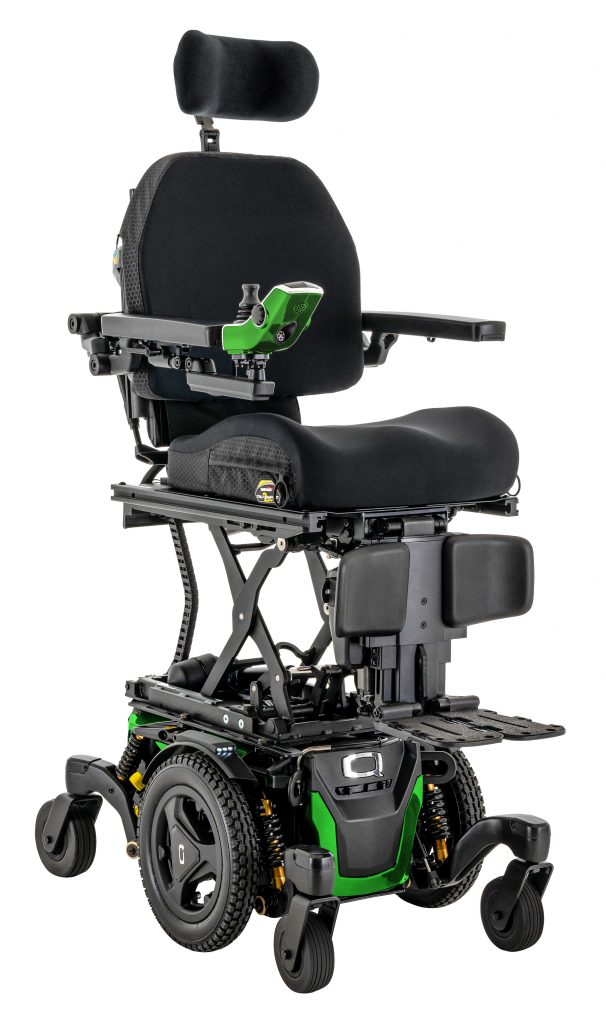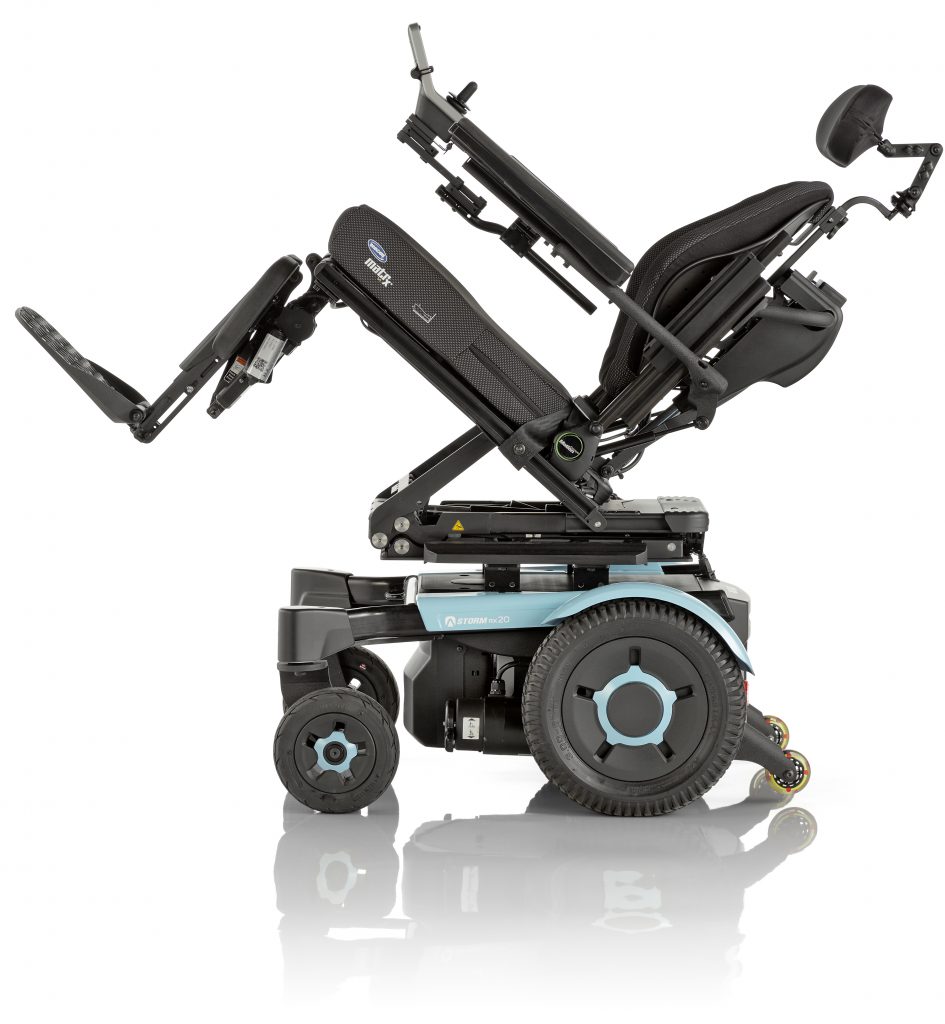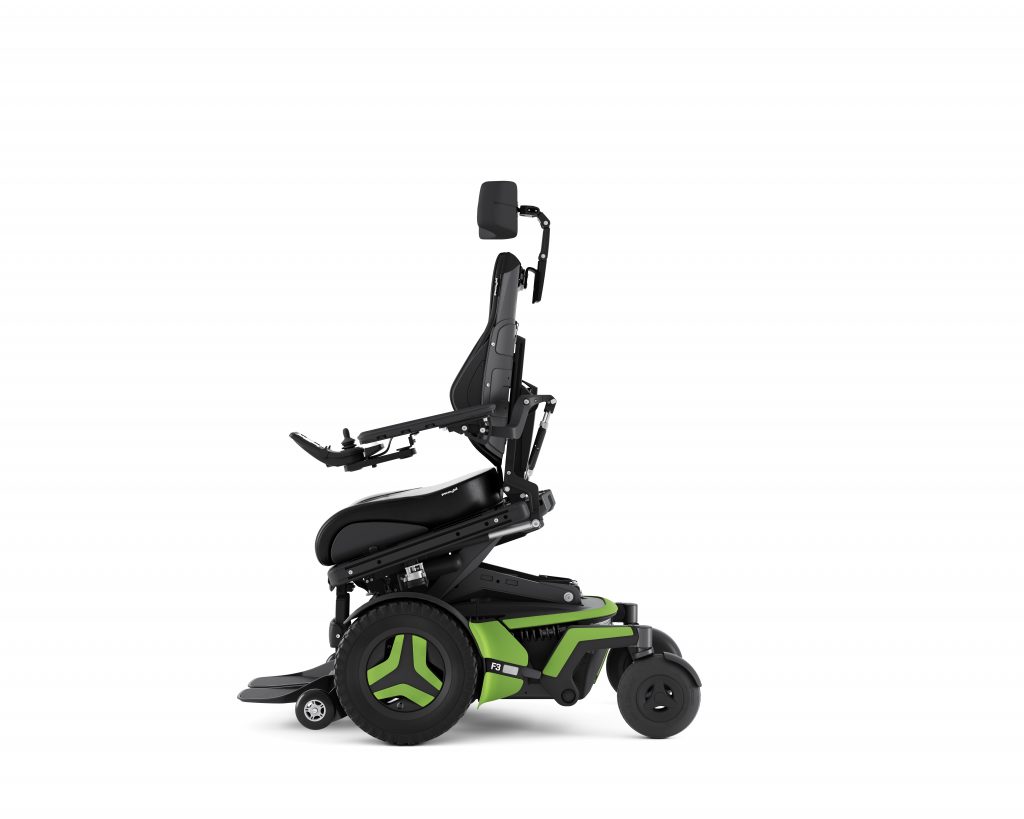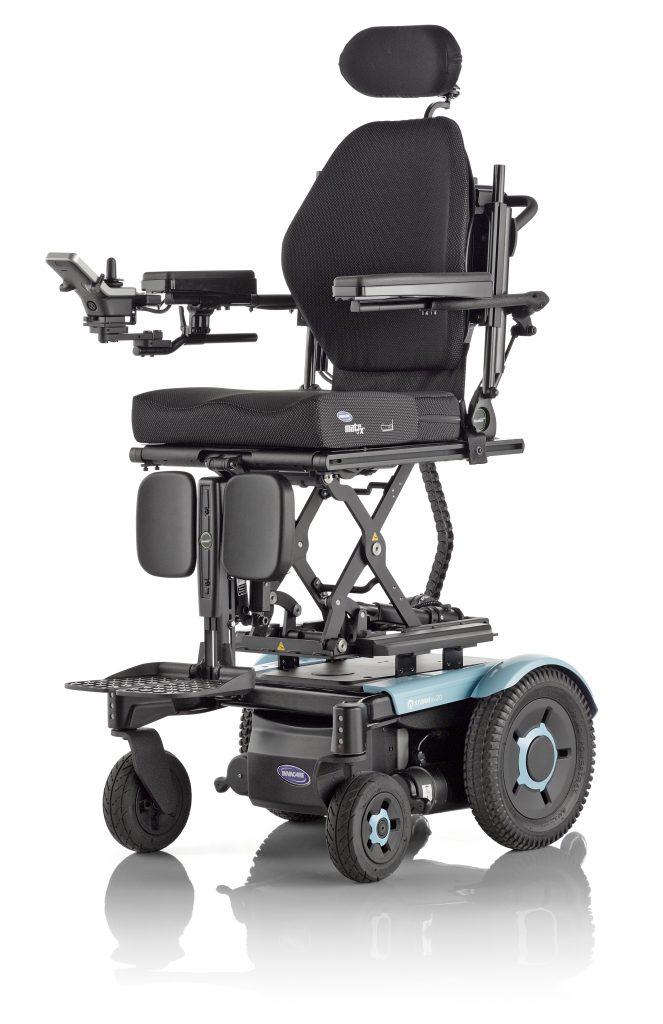Is It Covered?
Explaining what the Centers for Medicare and Medicaid Services’ decision about power seat elevation means for you

In May 2023, the Centers for Medicare and Medicaid Services (CMS) issued a decision regarding the coverage of power seat elevation systems for complex rehabilitation technology (CRT) users. We’re weighing in on the details of that decision, next steps in the process and what it all means for you.
What was the decision?
CMS found that power seat elevation equipment falls within the benefit category for durable medical equipment. According to the decision, power seat elevation equipment is considered necessary for individuals using complex rehabilitative power-driven wheelchairs who meet specific conditions:
- The user undergoes a specialty evaluation that confirms his or her ability to safely operate seat elevation equipment in the home, completed by a physical therapist, occupational therapist, assistive technology professional (ATP) or other licensed/certified medical professional.
- At least one of the following apply:
- User performs weight-bearing transfers while in the home;
- User requires a non-weight bearing transfer while in the home;
- User reaches from the power wheelchair to complete one or more mobility related activities of daily living.
Read the entire decision here.
So what does this decision mean for CRT users?
“This is an incredible decision,” says Wayne Grau, executive director of the National Coalition for Assistive and Rehab Technology (NCART). “It allows for a much-needed and very well-received product to be made available across the board to individuals who qualify for it.”
So, CMS made the decision to cover seat elevation. What’s the next step in the process?
The next step in the process, Grau says, is determining the Medicare reimbursement codes as well as pricing. “We submitted for codes on July 3,” Grau says. “That was something manufacturers and many other people were working on for more than three years because we needed to explain the coding we had suggested and back that up with data.” CMS is also working to determine pricing, using information and a report supplied by members of the Independence Through Enhancement of Medicare and Medicaid (ITEM) Coalition. “We’re hoping to hear something by late November, maybe a preliminary decision,” Grau says. “CMS will then release the final decision regarding coding and pricing, which could happen as early as December or January.”
This is a CMS coverage decision, but is it likely to affect what private insurance providers cover? Why or why not?
This decision currently only affects those covered by Medicare and Medicare Advantage plans, but since CMS is the model most commercial insurance providers follow, Grau and other industry experts are hoping other private insurance providers will soon do the same. “A number of other states and private insurance providers are already covering and paying for power seating elevation,” Grau said. “This may be a state-by-state issue, but we are hoping other commercial insurance providers will soon follow suit.”
I have an evaluation coming up for a new wheelchair. What do I need to do?
At your evaluation, talk with your physical therapist or assistive technology professional (ATP) to see if you qualify for seat elevation. If you do, your care team will include this information in the documentation that is required by your health insurance provider, who will review it. Please remember that the CMS decision about seat elevation coverage only applies to those covered by Medicare and Medicare Advantage plans. Private insurance providers may not cover it yet, so be sure to talk with your care team, who know the specifics of your case and your coverage options, to navigate this process.
So CMS decided to cover power seat elevation, but what about power standing systems?
Initially, the ITEM Coalition asked CMS to consider power seat elevation and power standing systems together, but the CMS decision issued last May only considered seat elevation. “Power standing systems are on the published waiting list for CMS coverage determinations, but we don’t have an indication right now about when they might consider it,” Grau says. “They have heard our concerns and asked for some additional data that had been released since the initial submission, so we feel like that is a good sign.” CMS coverage of power standing systems is something Grau says industry advocates will continue to press for, but, for now, they must wait until CMS opens up the coverage determination process.



SIDEBAR: How did we get here?
Wondering about the timeline for the CMS decision about power seat elevation? Here’s a glimpse at the process. Making changes to CMS coverage determinations is a lengthy process that often involves work and support from consumers and partners across the CRT industry.
August 2018: The ITEM Coalition wrote to CMS Administrator Seema Verma and then-Health and Human Services Secretary Alex Azar seeking a review of the CMS coverage policies for power seat elevation and standing systems. The coalition met with CMS nine times between 2018 and 2020 to discuss these policies and got to work drafting the 91-page formal request for reconsideration that was submitted to CMS in September 2020. That document can be viewed here.
September 2020: A coalition of patients, providers, researchers and subject matter experts (the ITEM Coalition) submitted a formal request for reconsideration of the National Coverage Determination for power seating elevation and power standing systems.
August 2022: The Centers for Medicare and Medicaid Services (CMS) opened public comment for power seat elevation, but not power standing systems.
May 2023: CMS posted their final decision, finding that power seat elevation equipment falls within the benefit category for durable medical equipment (DME).
NOW: Both CMS and CRT stakeholders are working to determine coding and reimbursement for power seating systems as well as pricing. More information is expected this fall with final implementation anticipated in 2024.
Related Articles
Is It Covered?
Explaining what the Centers for Medicare and Medicaid Services’ decision about power seat elevation means for you In May 2023, the Centers for Medicare and…
Making a Place for Community
How a coffee shop in Cookeville, Tennessee, is striving to create community and inclusivity Michael England never really expected to open a coffee shop. His…
All Accessibility Isn’t Equal
How NSM client Brandon Winfield is using technology to help make the world more accessible As creator of the iAccess.Life app, Brandon Winfield is used…


